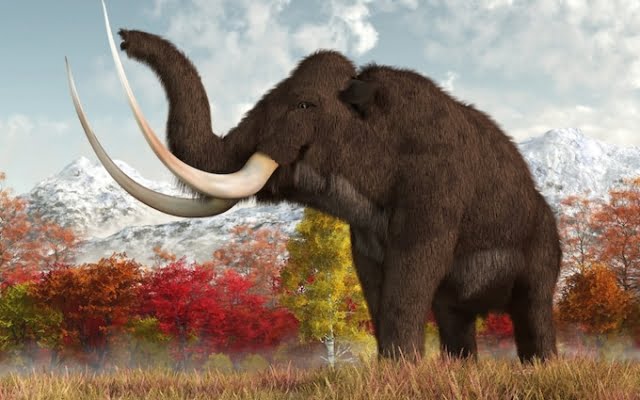 Woolly mammoths roamed Europe, Asia, and North America, but began to die out around 10,000 years ago. Photo: iStockphoto
Woolly mammoths roamed Europe, Asia, and North America, but began to die out around 10,000 years ago. Photo: iStockphoto
The woolly mammoth wasn't always as fluffy as scientists discovered, discovering early creatures were fluffy with big ears.
A new study of the genomes of early mammoths around 700,000 years ago compared to later animals of the last 100,000 years shows that their thick, shaggy coats evolved later.
This suggests that they developed new features to work in harsher climates.
The scientists also found changes in their immune systems that could help them deal with new viruses and bugs.
Experts believe their ears have gotten smaller over time. Mammoths had noticeably smaller ears compared to elephants, which is likely due to living in colder climates.
The Reason for Big Ears
Because the ears are used to dissipate heat, hence the ears of African elephants are larger than those of their Indian counterparts, the ears of mammoths seem to have shrunk over time to conserve heat.
«The earliest woolly mammoths didn't fully evolve,» says senior author Love Dalen, a professor of evolutionary genomics at the Center for Paleogenetics in Stockholm.
«Perhaps they had larger ears and their coat was different, perhaps less insulating and fluffy compared to later woolly mammoths.»
Wooly mammoths roamed Europe, Asia and North America, but began to die out about 10,000 years ago when the ice age ended, and eventually became extinct about 4,000 years ago.
They lived at the same time as early humans, who depicted these creatures in cave paintings and carvings and used their bones, tusks, and hides to create art, tools, and dwellings.
People also hunted this species for food, which may have accelerated their extinction when they were already dying out due to climate warming.
The researchers compared the genomes of woolly mammoths with those of modern elephants to find out what makes them unique. They also studied mammoths over a period of 600,000 years to see how they evolved over time.
Studying evolution in real time
The earliest mammoth genome belonged to a specimen called the Chukchi, which lived approximately 700,000 years ago.
“The presence of the Chukchi genome allowed us to identify a number of genes that evolved over the course of the life of the woolly mammoth as a species,” said Professor Dalen.
“This allows us to study evolution in real time, and we can say that these specific mutations are unique to woolly mammoths and they did not exist in his ancestors.»
Even early on, woolly mammoths had genes that made them hairier than elephants and DNA that helped them accumulate fat in the same way as other arctic species such as reindeer and polar bears.
A gene with several mutations has also been discovered that may be responsible for the tiny ears of the woolly mammoth.
The study was published in the journal Current Biology.





















































Свежие комментарии